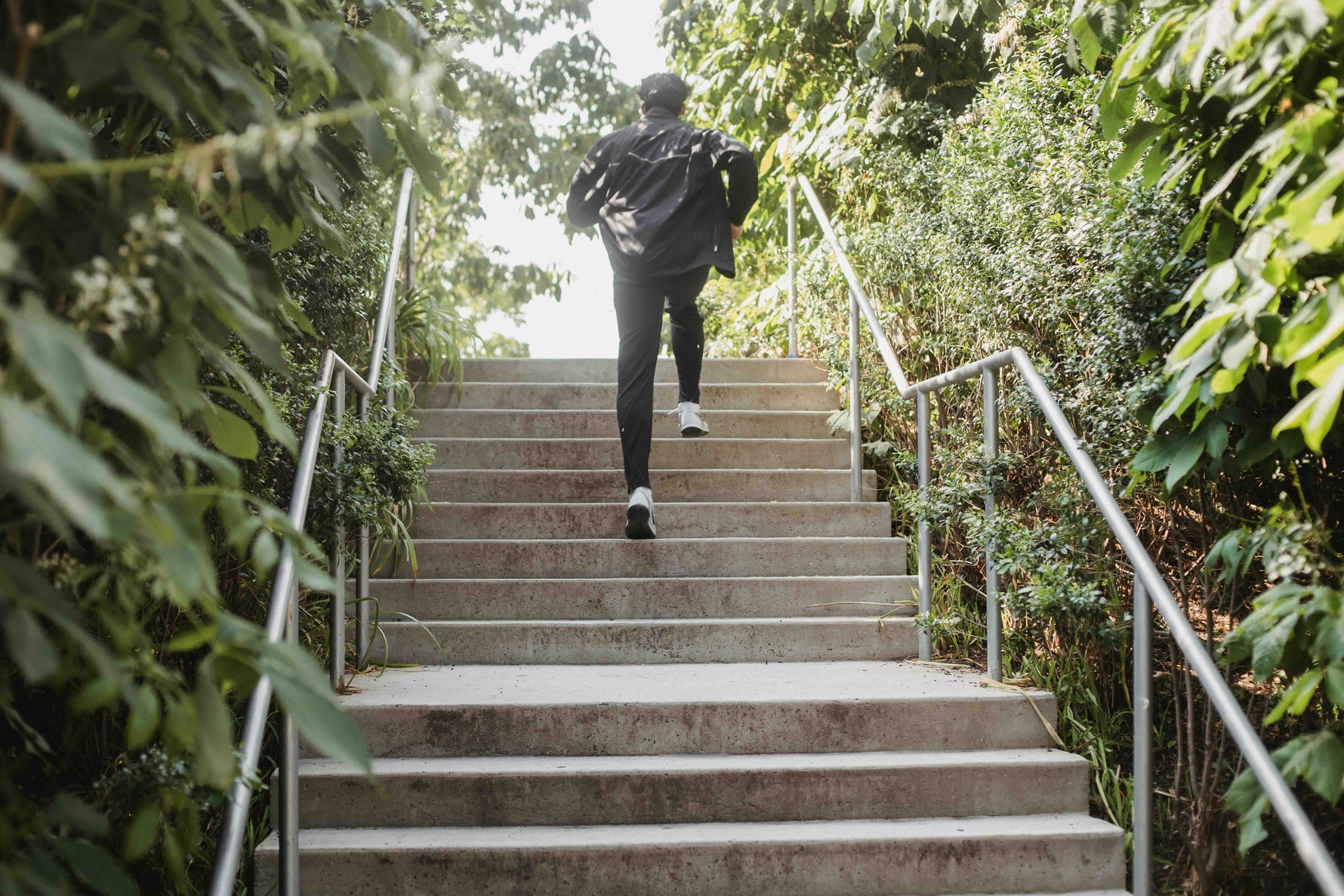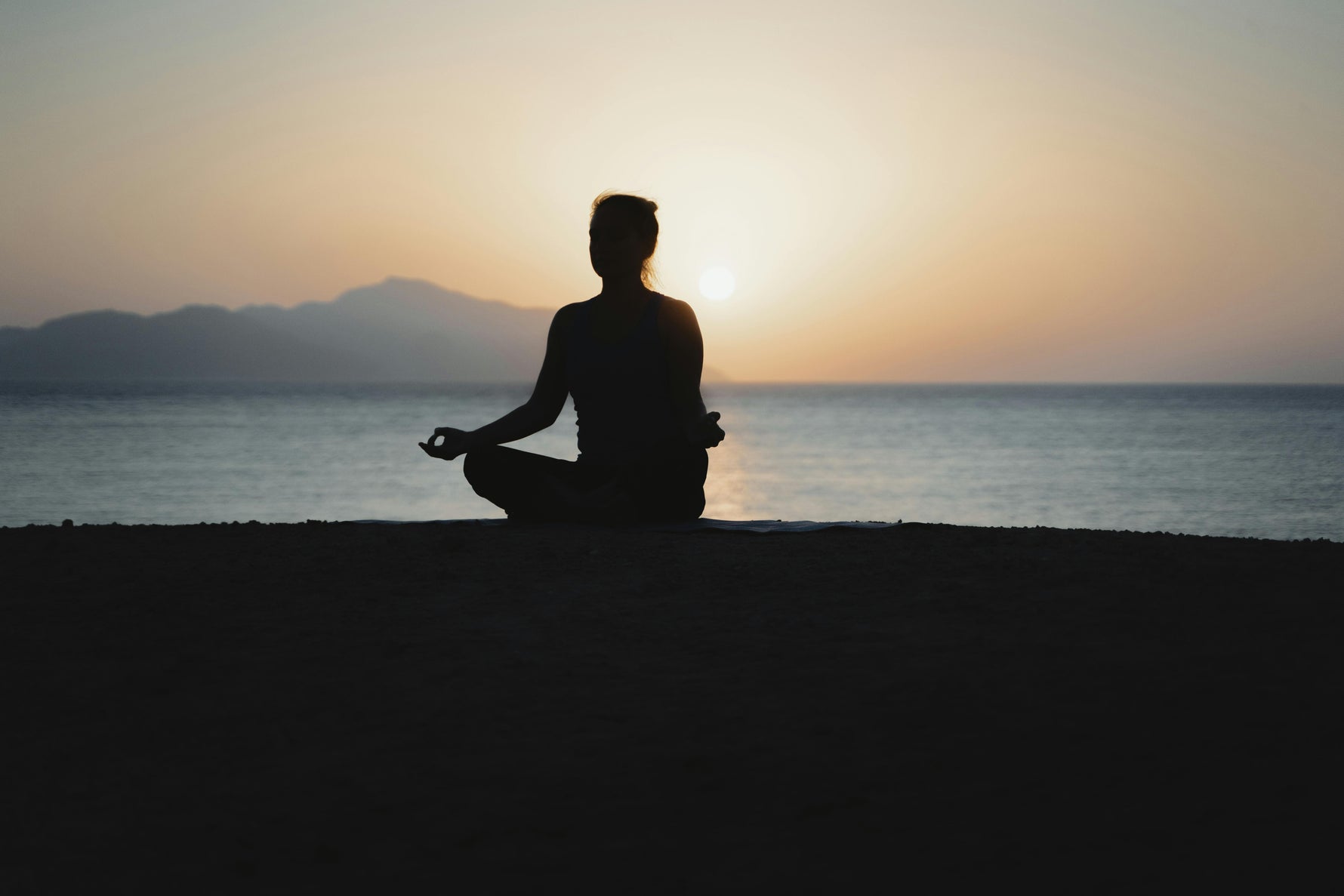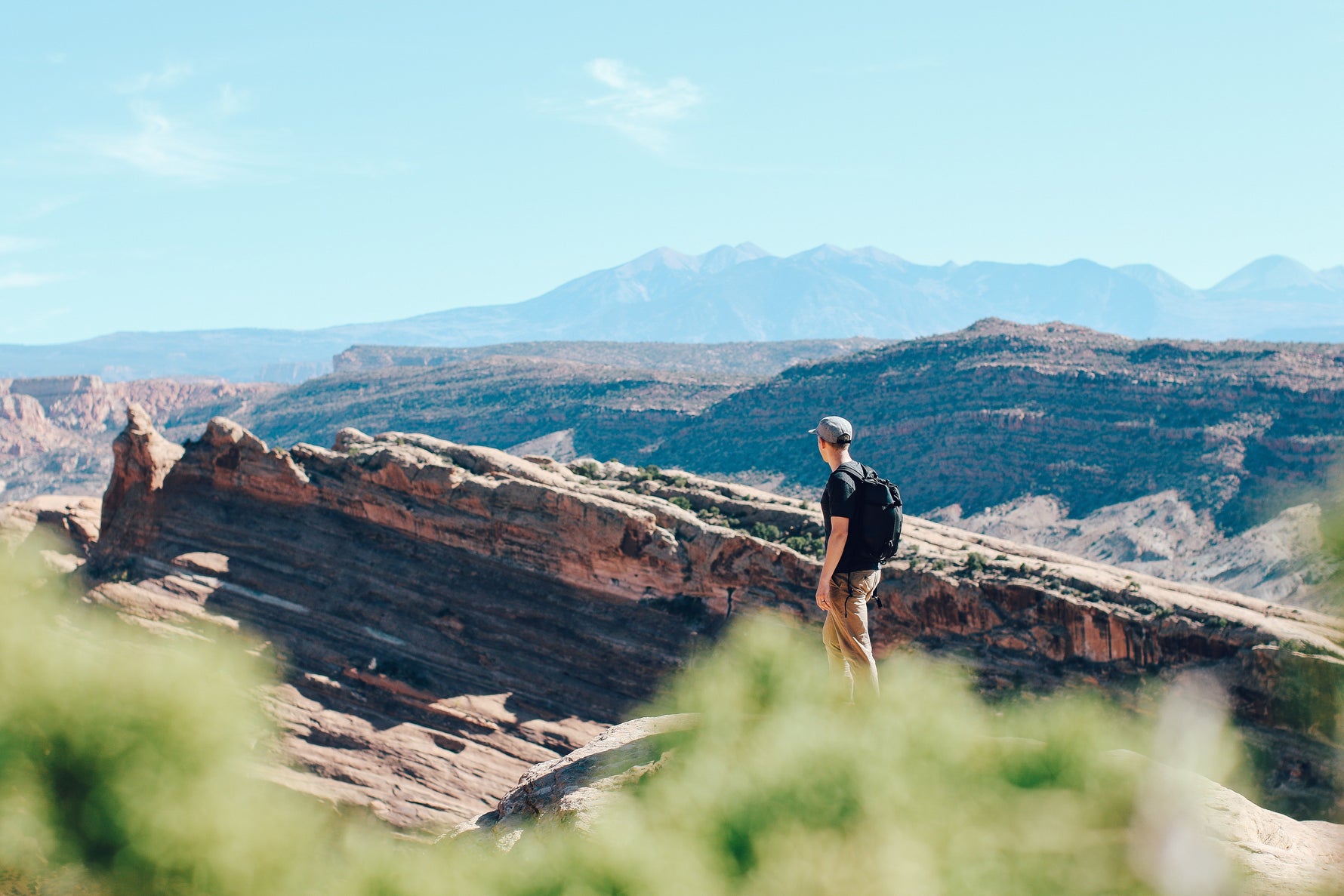Live Well Blog

Hybrid Training: The Fitness Shift Made for Movement
on Oct 02 2025
Hybrid training is the fitness shift built for life outdoors. By blending strength and endurance, athletes are building bodies that are durable, versatile, and ready for anything—from steep trail climbs to long coastal rides. In this post, we explore why hybrid training is rising, how it supports an active outdoor lifestyle, and simple ways to bring it into your week.

Morning Mindfulness: 3 Breathwork Practices for Busy Weeks
on Oct 02 2025
Busy week? Your breath is the fastest reset button you’ve got. In just five minutes you can lower stress and sharpen focus—no mat or studio required. Discover how to make mindful mornings part of your everyday.

5 Hidden Trail Runs Near LA That Locals Swear By
on Sep 16 2025
Los Angeles might be famous for its freeways, but locals know the city’s real treasures are its trails. Beyond the crowded classics, LA hides a network of paths where you can trade traffic for singletrack, swap horns for hawks, and find a rhythm that feels more wild than urban. These aren’t the Instagram hotspots—they’re the runs locals whisper about, the ones that make you fall in love with LA all over again.
The best runs in LA aren’t always marked on a map—they’re hidden in plain sight, waiting for you to lace up and explore.
1. Amir’s Garden, Griffith Park
Distance: 3–4 miles out and backDifficulty: Moderate
Tucked inside Griffith Park is Amir’s Garden, a community-tended oasis that feels worlds away from the city below. The trail climbs quickly, rewarding runners with shady switchbacks and bursts of wildflowers. If you’re searching “Griffith Park trail run,” this hidden gem is the one most visitors miss.
2. Corral Canyon Loop, Malibu
Distance: 2.5-mile loopDifficulty: Easy to Moderate
Just off the PCH, Corral Canyon delivers sweeping ocean views without the crowds. The loop winds through chaparral-covered hillsides before circling back down toward the beach. It’s a short but satisfying run where salty air and rolling singletrack keep things playful the whole way.
3. Hondo Canyon Trail, Topanga
Distance: 5 miles out and backDifficulty: Moderate to Challenging
Hidden in Topanga’s quiet backroads, Hondo Canyon blends lush shade with airy ridgelines. Expect creek crossings, oak canopies, and enough uphill to earn your downhill. It’s a local favorite for those who want the solitude of a wilderness run without leaving LA County.
4. Caballero Canyon, Encino Hills
Distance: 3.5 miles out and backDifficulty: Moderate
Caballero Canyon is a sun-drenched climb that links into the Santa Monica Mountains backbone trail. The route offers just enough incline to test your quads and plenty of sky overhead—bring a hat for sun protection, especially mid-day. Many WoBe runners swear by it as their go-to quick workout with big payoffs in views.
5. Cherry Canyon Park, La Cañada Flintridge
Distance: 3–6 miles depending on routeDifficulty: Moderate
Cherry Canyon is a tucked-away network of fire roads and singletrack at the foothills of the San Gabriels. Locals love it for its versatility—you can make it a mellow loop or stack climbs for a quad-burner. Wildflowers bloom in spring, and at sunset the Verdugo ridges light up in gold. It’s the kind of trail that feels hidden in plain sight.
Run Well, Live Well
LA’s hidden trails prove that you don’t have to leave the city to find adventure—you just have to know where to look. Whether it’s the wildflowers of Griffith Park or the ridges of La Cañada, these paths invite you to get moving and reconnect with what matters most: fresh air, open space, and the freedom of motion.
Pro tip: A structured brim hat can be your best running partner on these exposed trails—sun protection without slowing you down. That’s exactly why WoBe was built: headwear made to move, so you can focus on the miles ahead.
Keep exploring, keep moving. Discover more trails, tips, and inspiration on our favorite "hiker friendly" app at www.alltrails.com.

Fuel Right: Easy Meals for Active Days
on Sep 16 2025
What you eat should work for you—not weigh you down. The right fuel sets you up for steady energy, quicker recovery, and the freedom to move the way you want. And here’s the good news: it doesn’t take complicated recipes or boutique ingredients to get there.
These three go-to meals are quick, energizing, and built for movement. Think of them as the everyday fuel that keeps your body ready for what’s next.
1. Sunrise Trail Bowl
What’s in it: roasted sweet potato, two eggs, half an avocado, and a drizzle of olive oil.
This bowl hits all the right notes:
Slow carbs from sweet potato to keep your energy steady.
Protein from eggs to support muscles and satiety.
Healthy fats from avocado and olive oil to power longer efforts.
It’s the kind of breakfast that works as hard as you do—keeping you fueled for a morning trail run, ride, or busy day ahead.
2. Packable Energy Bites
What’s in it: oats, almond butter, honey, chia seeds. Mix, roll, chill.
Energy bites are the snack equivalent of a multitool: compact, versatile, and always good to have on hand.
Oats provide complex carbs for lasting energy.
Almond butter delivers protein and healthy fat.
Chia seeds add fiber, minerals, and hydration support.
Pack a few in your bag for hikes, surf checks, or those between-meeting hunger dips. They’re proof that fuel can be both simple and satisfying.
3. Recovery Greens Smoothie
What’s in it: frozen pineapple, banana, kale, fresh ginger, and water or almond milk.
This one’s a reset in a glass.
Pineapple + ginger fight inflammation and ease sore muscles.
Banana restores electrolytes like potassium.
Kale adds vitamins and antioxidants to support recovery.
It’s cold, refreshing, and hydrating—perfect after a sweaty workout or a sun-soaked afternoon outdoors.
Eat Like Your Next Move Matters
Nutrition isn’t about restriction—it’s about momentum. With meals like these, you’re fueling your body to perform, recover, and keep moving.
At WoBe, we believe food should support your lifestyle, not slow it down. Eat smart, eat simple, and stay ready for whatever’s next.

Downshift: The Recovery You Actually Need
on Sep 16 2025
You moved your body. Now let it reset.
Recovery isn’t optional—it’s the essential piece that keeps performance strong, your body ready, and your motivation steady. Without it, even the best training plan falls short. Recovery is where the gains actually happen: muscles rebuild, energy systems recharge, and your mind resets for the next challenge.
The good news? It doesn’t take fancy gadgets or ice baths (unless you are into that). The recovery you really need is simple, consistent, and built into your routine.
Keep It Simple
Start with what’s free and effective: water, food, rest, and light movement. Build those foundations before adding anything else.
Move Gently
Recovery isn’t about shutting down completely—it’s about shifting gears. Light activity keeps circulation flowing and eases muscle tightness.
Take a short walk after a workout.
Stretch while watching TV.
Flow through 10 minutes of mobility before bed.
Think of it as giving your body a signal: “I’m still moving, but you can relax now.”
Refuel Wisely
Hydration and nutrition are often overlooked, but they matter as much as the workout itself.
Replenish with water right after exercise.
Add electrolytes or a salty snack if you’ve been sweating hard.
Aim for a balanced meal within a couple of hours—protein to repair, carbs to restore energy, and healthy fats to keep you steady.
Your next effort starts with how you refuel from the last one.
Sleep Is King
There’s no recovery protocol more powerful than sleep. During deep sleep, muscles rebuild, hormones regulate, and your nervous system resets. If you’re training hard, aim for 7 to 9 hours per night. Skipping sleep is like skipping half the workout—it robs you of the benefits you’ve already earned.
Rest Is Where You Adapt
Your body doesn’t get stronger during the workout—it gets stronger when you recover from it. That’s the paradox: effort pushes you forward, but rest locks in the gains.
At WoBe, we believe recovery isn’t the break between training—it’s part of training. Downshift, reset, and let your body adapt.

Train Like the Terrain Matters
on Sep 16 2025
The trail asks for more than cardio. It asks for stability, control, and strength—especially when the ground tilts, shifts, and climbs. Running hills or hiking switchbacks demands more than endurance; it requires a body that can balance, adapt, and stay powerful over uneven terrain.
The best part? You don’t need a gym or heavy gear to train for it. With a little space and your own bodyweight, you can build the stability and strength the trail demands. Try these three circuits anywhere—at the park, in your backyard, or even at a trailhead before you set out.
Circuit 1: Core + Balance
Strong trails start with a strong center. These moves train balance and stability so your body responds instead of rolling an ankle.
Plank hold – 1 min
Side plank (each side) – 30 sec
Bird-dog – 12 reps
Single-leg toe touch – 10 each side
Tip: Slow and controlled beats fast and sloppy here. Think stability, not speed.
Circuit 2: Power + Legs
This circuit fires up the muscles you use most on climbs and descents.
Bodyweight squats – 15 reps
Walking lunges – 20 steps
Calf raises – 20 reps
Step-ups – 10 each leg
Tip: Find a park bench, curb, or rock for step-ups. Trails are unpredictable—your legs should be ready for anything.
Circuit 3: Endurance Burn
Finish with moves that test grit and mimic the high-output bursts of trail running.
Mountain climbers – 30 sec
Jump squats – 12 reps
Wall sit – 1 min
Push-ups – 10–15 reps
Tip: Push-ups may not feel “trail specific,” but upper-body endurance helps you drive arms uphill and stay strong through fatigue.
How to Train
Do 2 rounds of each circuit.
Rest 30 seconds between moves and 1–2 minutes between circuits.
Progress by adding rounds or extending holds as strength builds.
Built for Movement, Made for Trails
You don’t need fancy equipment to train outdoors—you just need consistency and a willingness to move with intention. The payoff is big: more confidence on uneven ground, stronger climbs, and fewer stumbles when fatigue sets in.
At WoBe, we believe the best training makes the outdoors feel more effortless. Train like the terrain matters. Because it does.

How 20 Minutes Outside Can Shift Your Mood
on Sep 16 2025
We’re made to move under open skies. And yet—most of us spend nearly 90% of our lives indoors. Between work, screens, and commutes, the daily rhythm often keeps us boxed in. Research shows that just 20 minutes outdoors can reduce anxiety, lower cortisol levels, and reset focus. But beyond the science, it’s about how it feels: lighter, calmer, more grounded.
The best part? You don’t need hours, gear, or a trailhead. You just need a moment—and a little intention.
What Counts as “Outside Time”
Think less “epic adventure,” more “open-air reset.” Small doses matter:
A walk around the block before your first meeting.
Coffee on the porch instead of at your desk.
Stretching in the backyard between calls.
Fresh air and natural light alone are enough to shift your physiology.
Go Phone-Free
Here’s the challenge: resist the scroll. Multitasking outdoors dulls the benefits. Instead, pocket your phone or flip it to airplane mode. Let your senses tune in—birdsong instead of pings, sunlight instead of screens. Ten minutes of true presence outside is more restorative than an hour distracted.
Anchor It to Routine
Outdoor time sticks best when tied to habits you already have. Try:
Morning coffee in the sun.
A midday walk during lunch.
A post-work loop around the block to close out the day.
Consistency builds the reset into your rhythm.
Small Moves, Big Payoffs
Outside time doesn’t need to look like summiting a peak. It’s about creating space in your day to breathe, reset, and recharge. The payoffs stack quickly: sharper focus, steadier nerves, and a deeper sense of presence in your body.
Live Well, Made Simple
At WoBe, we believe you don’t need a perfect plan—you just need fresh air. Step outside for 20 minutes and let nature shift your mood.